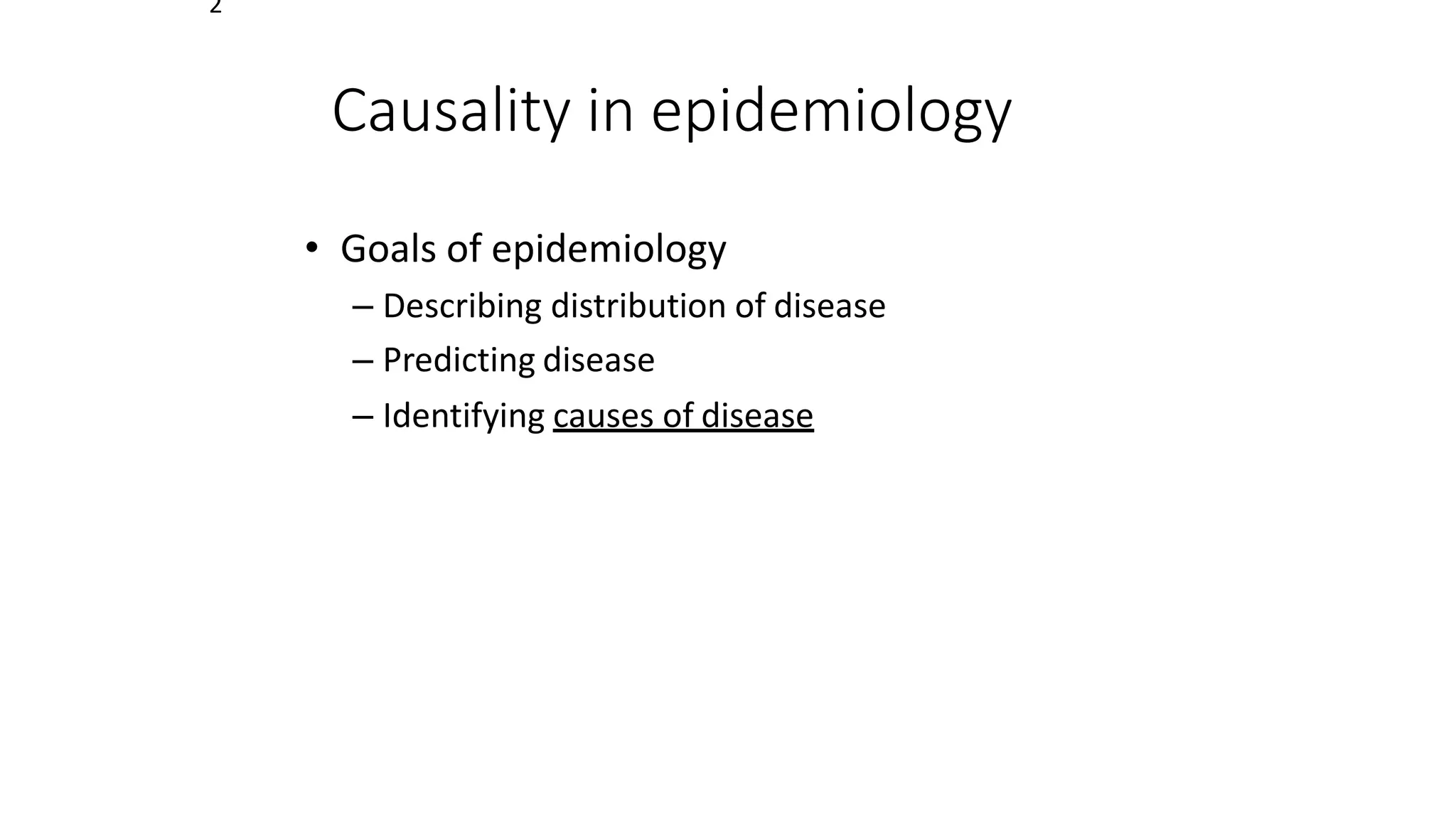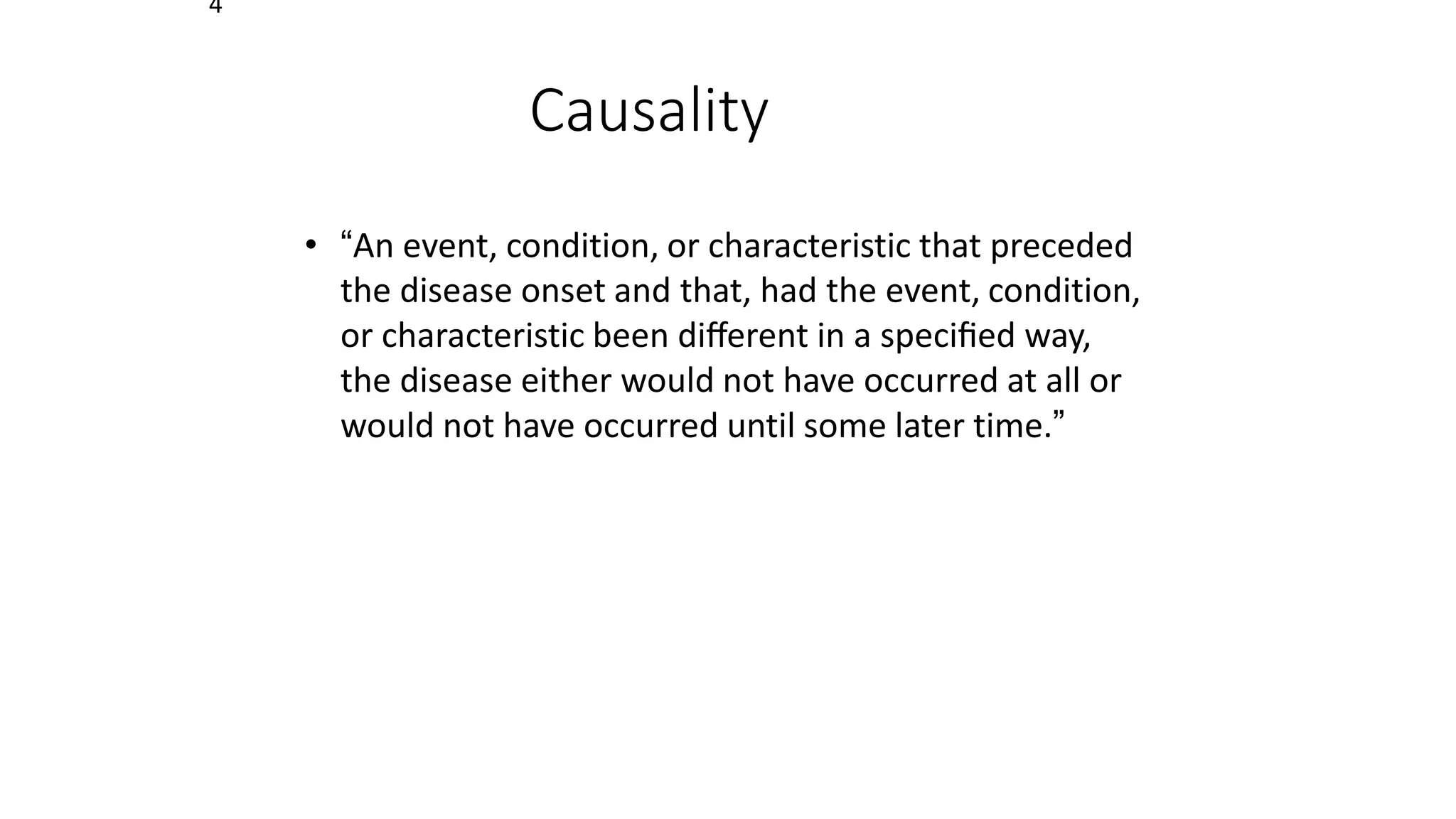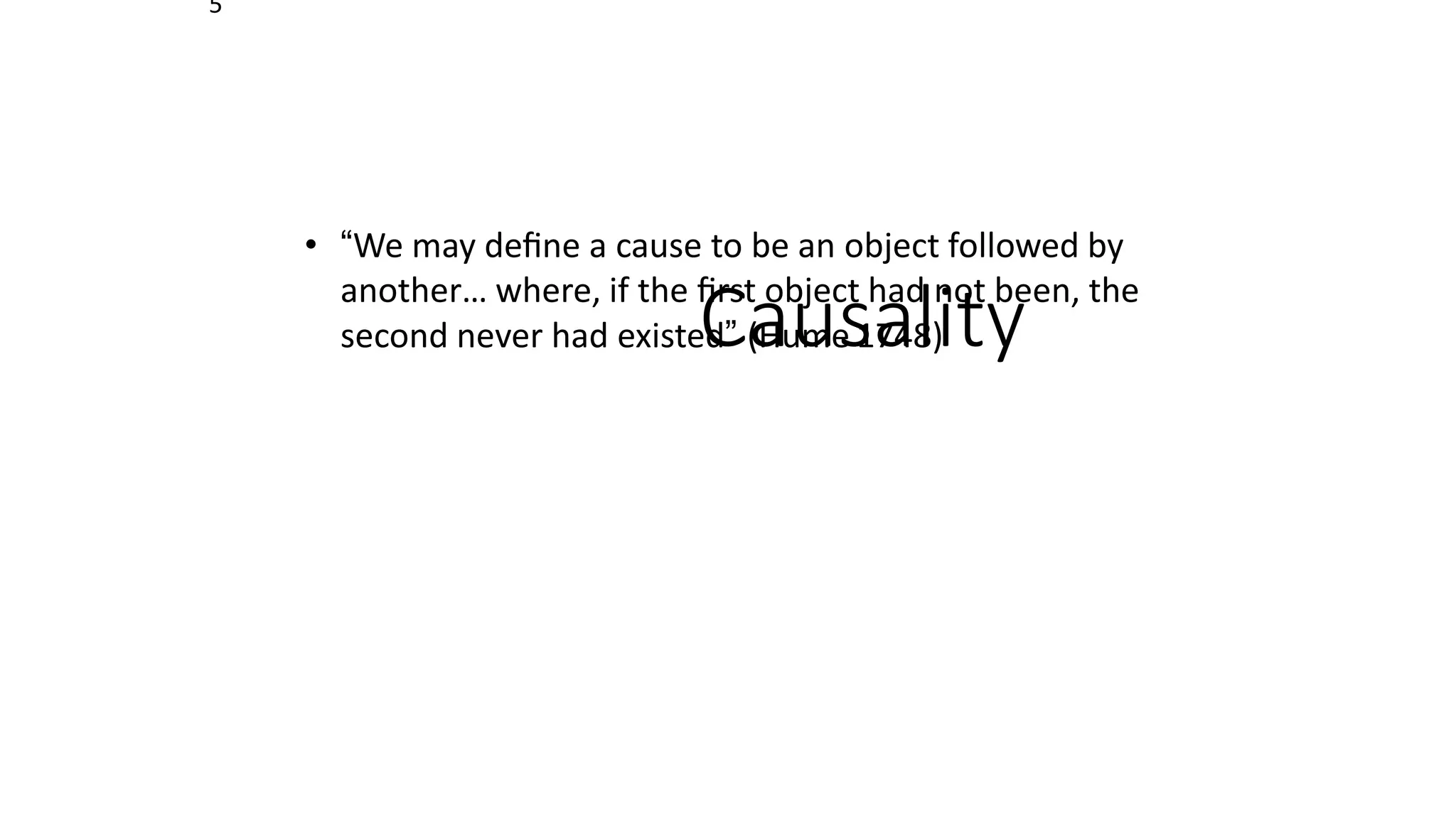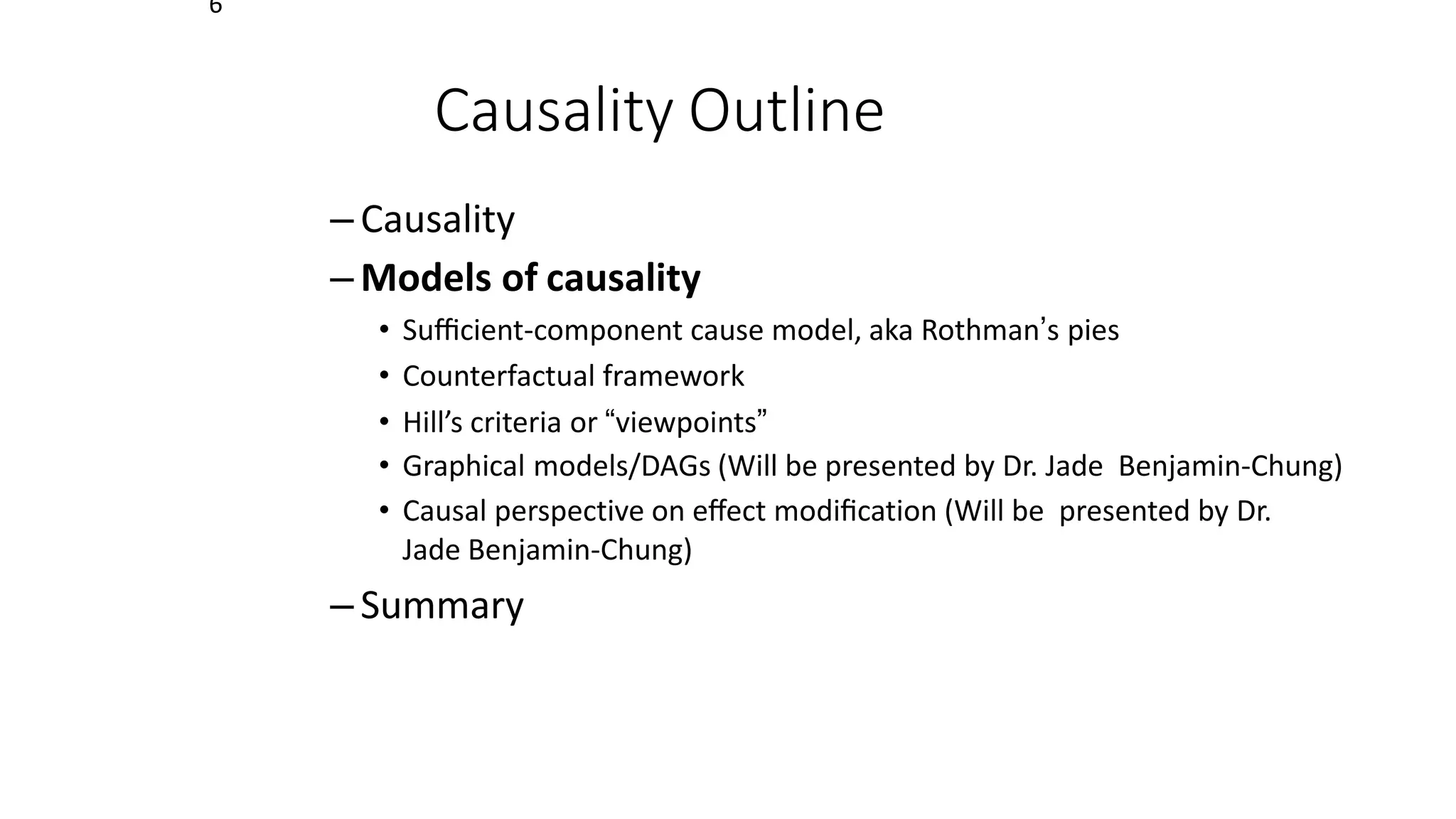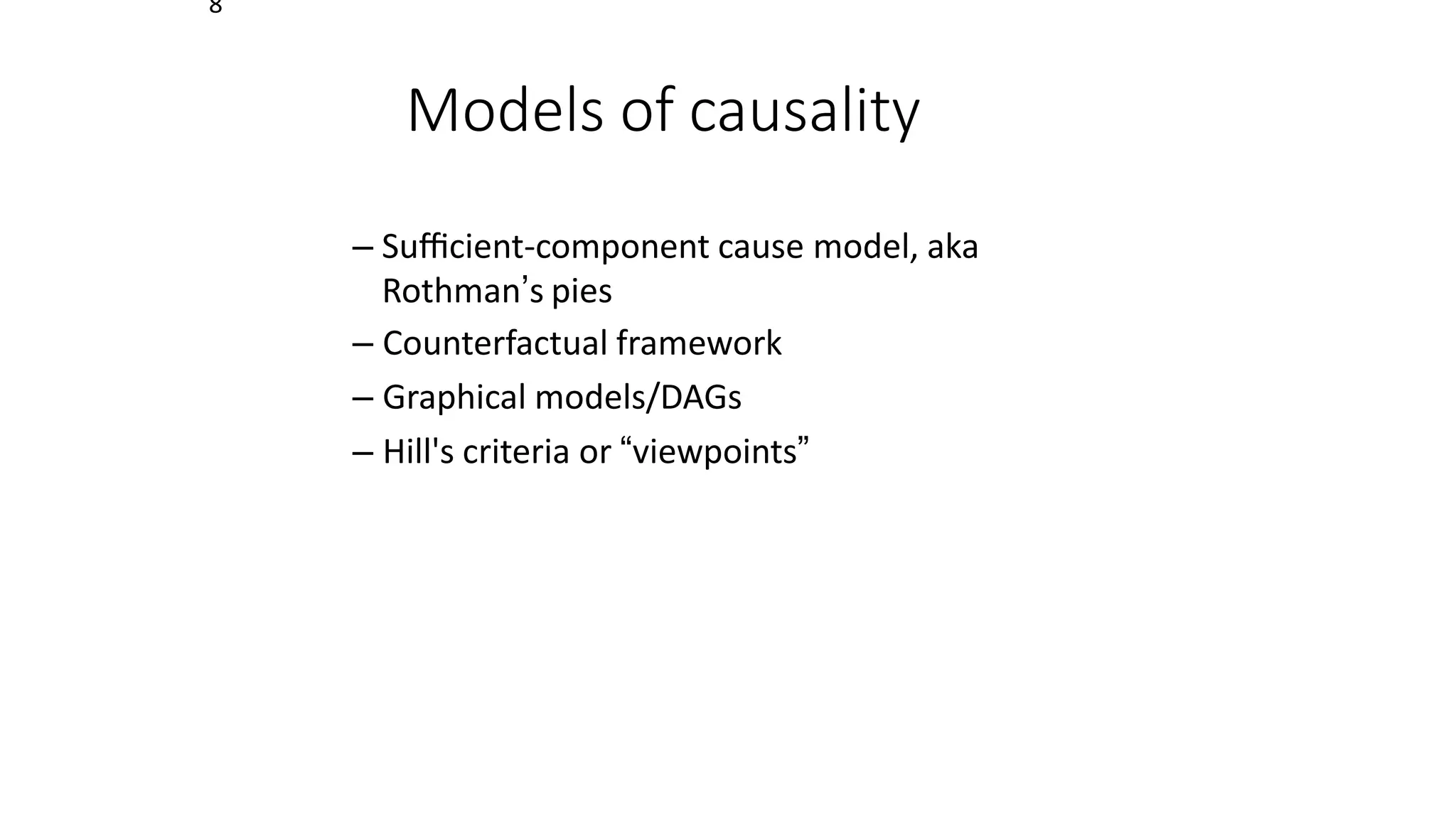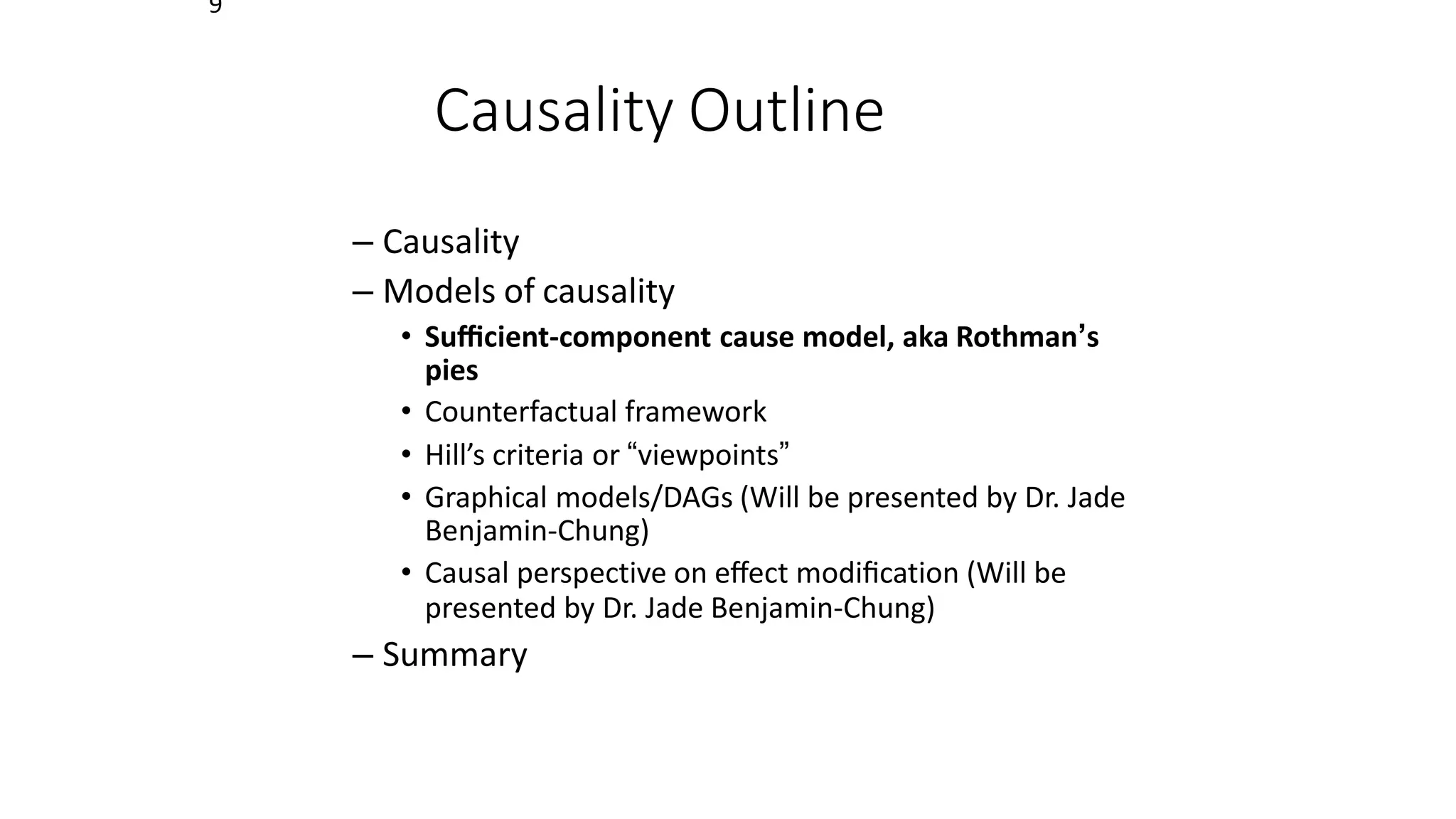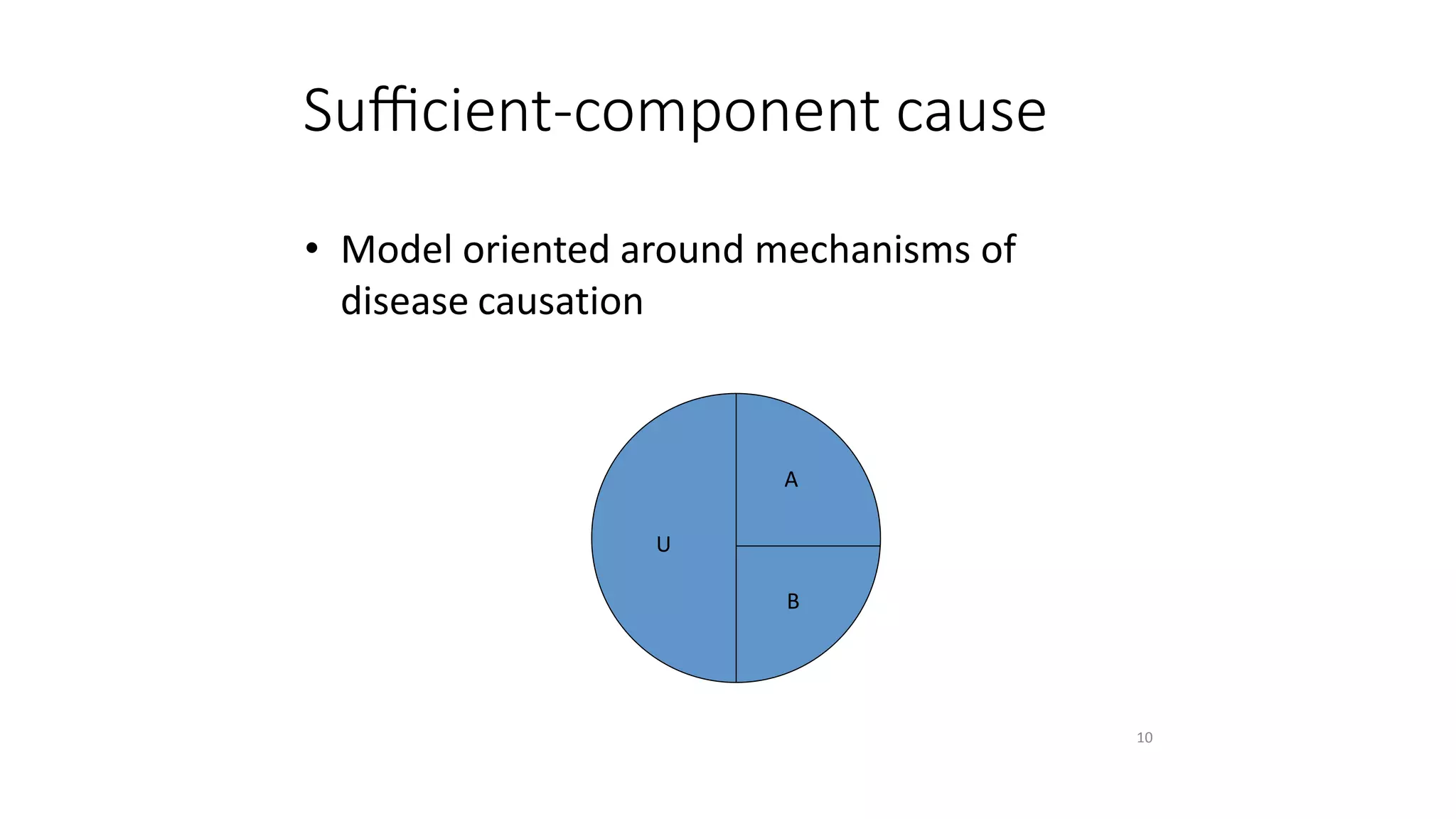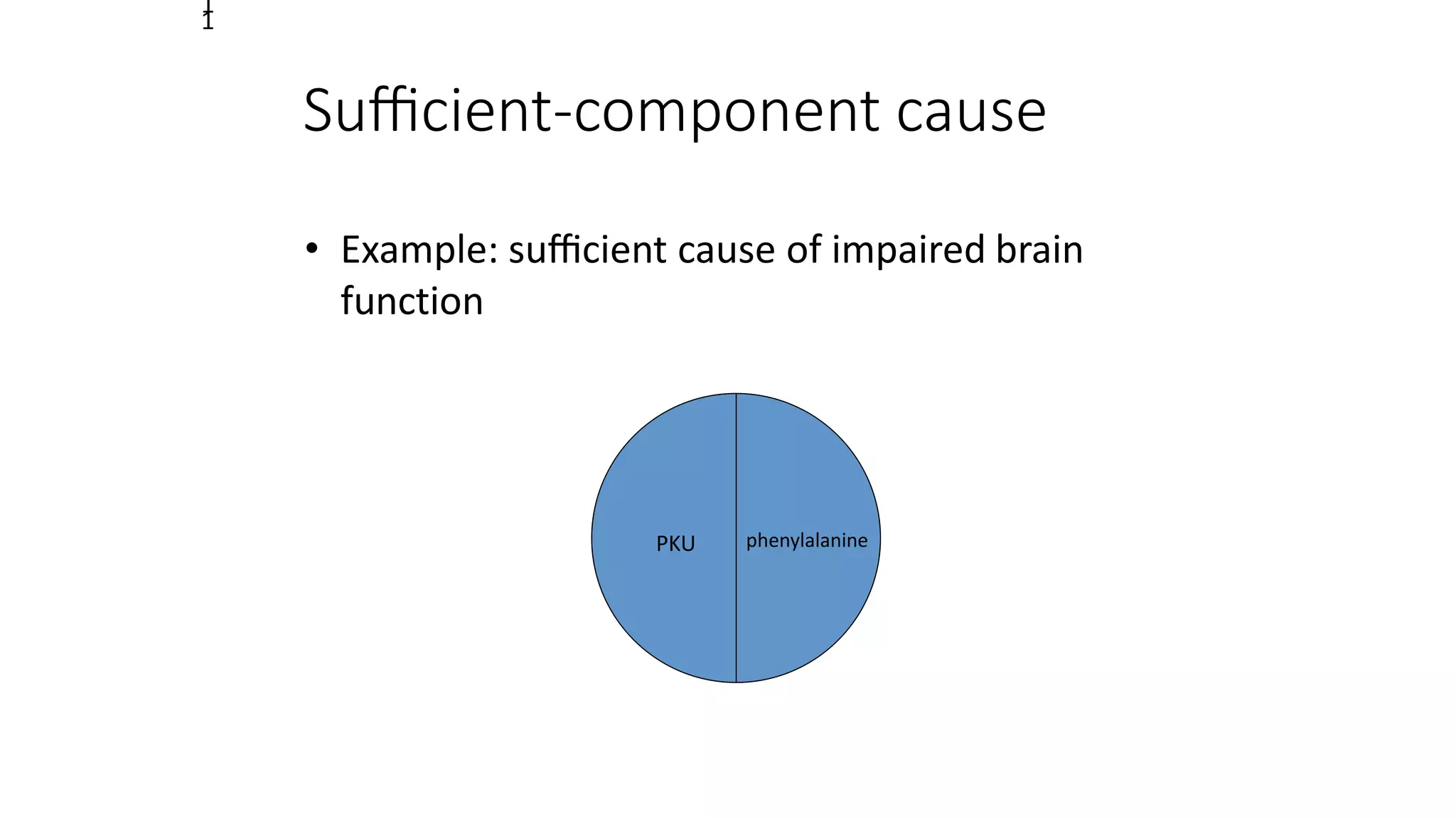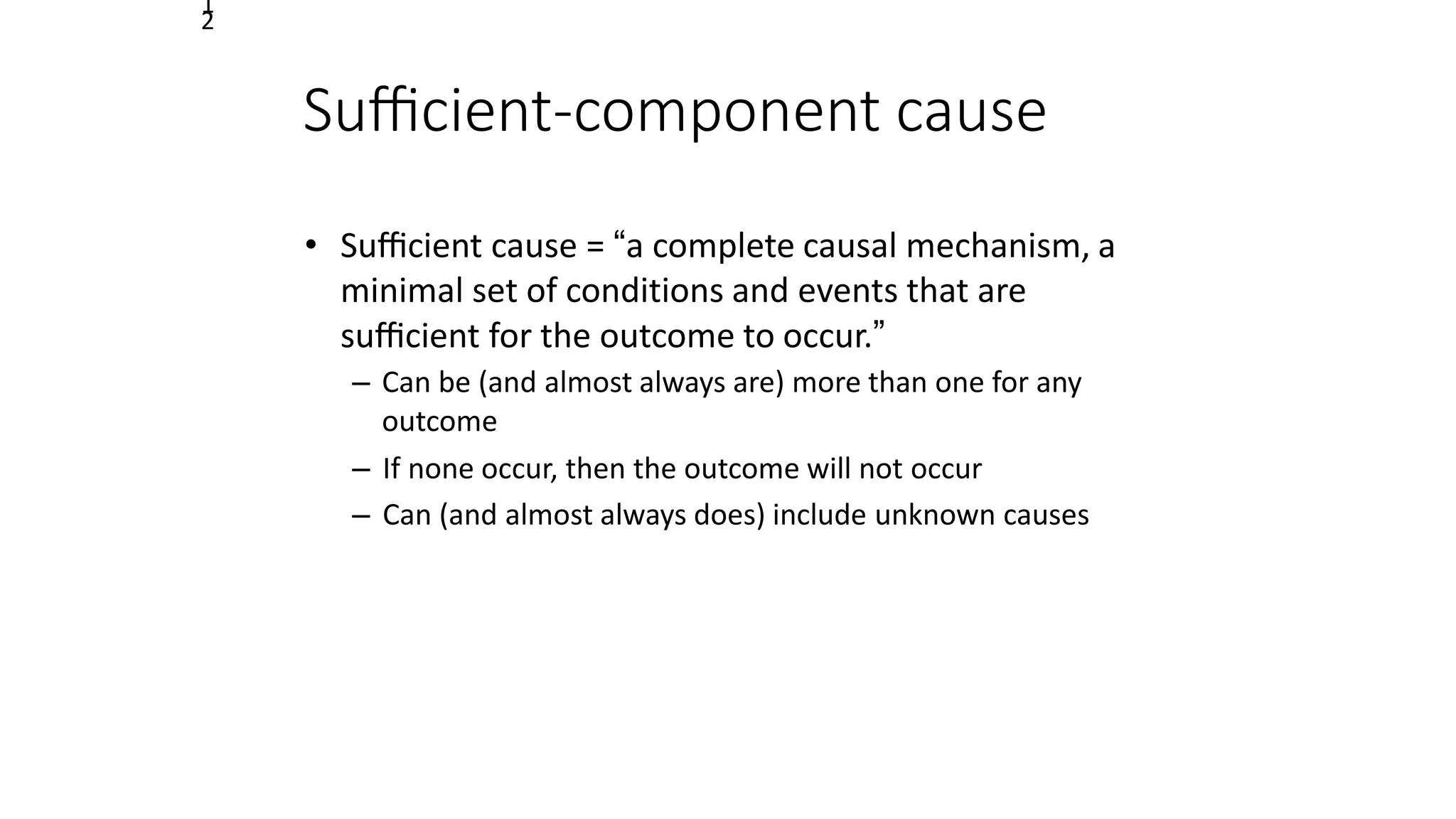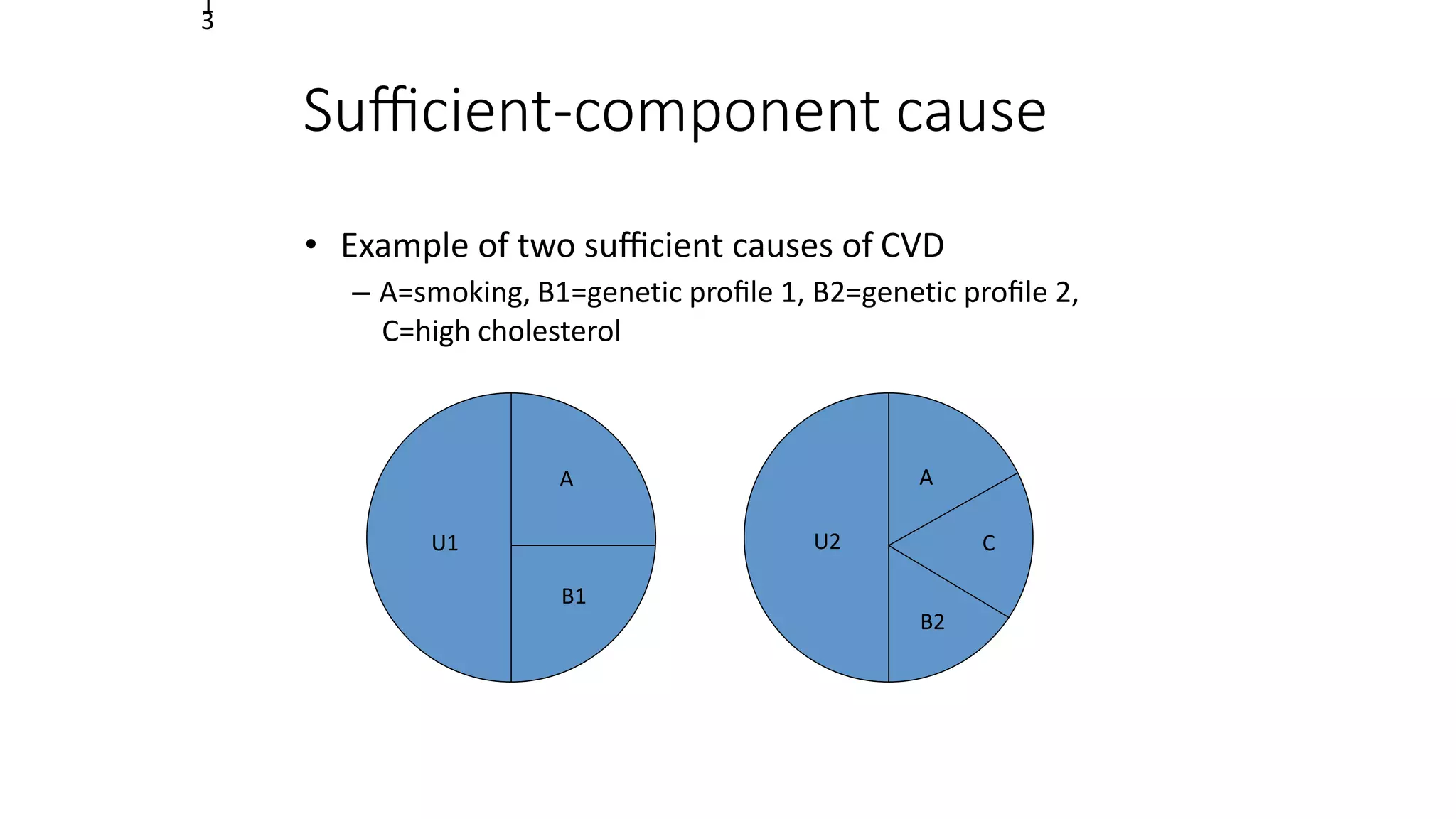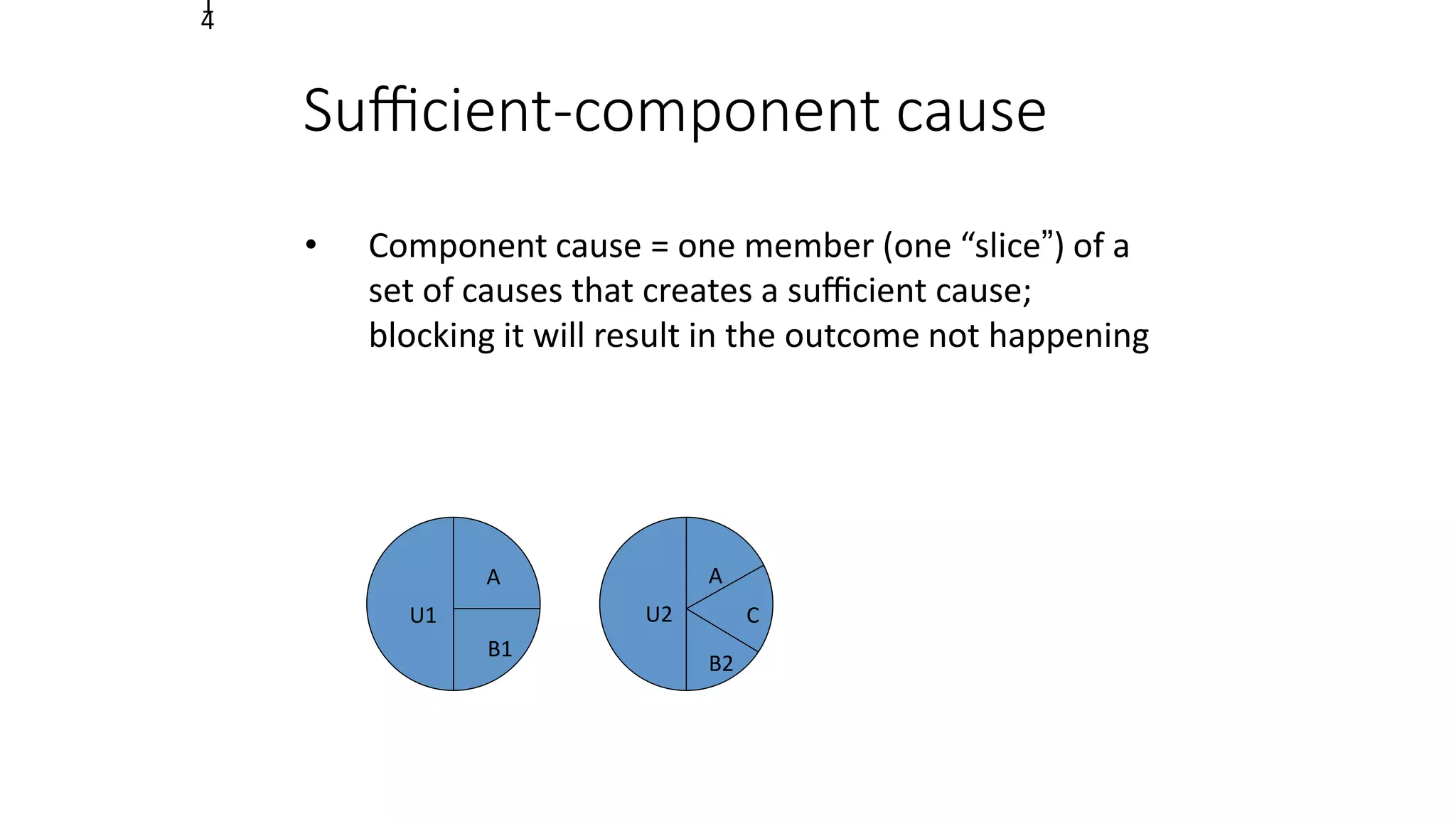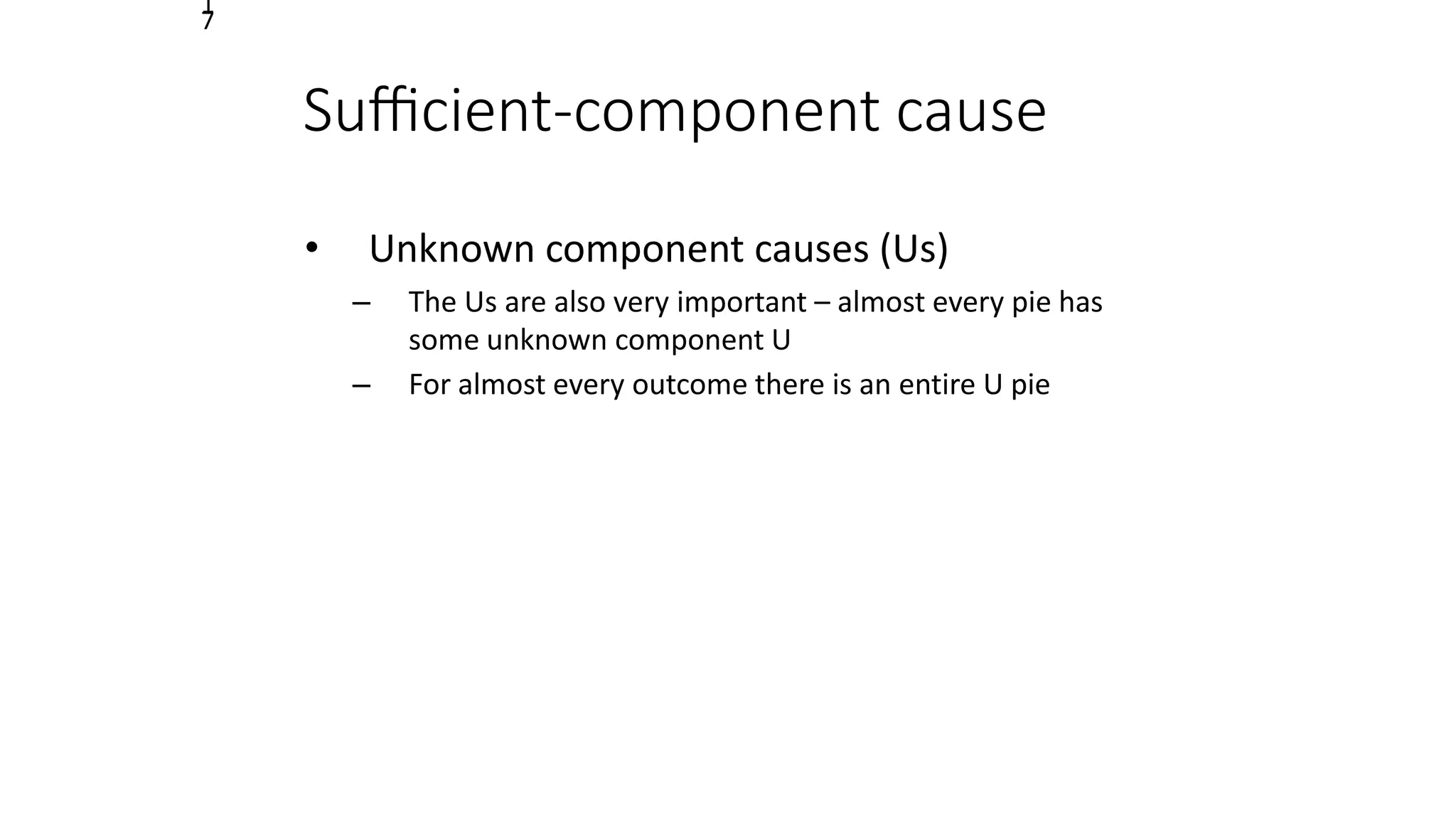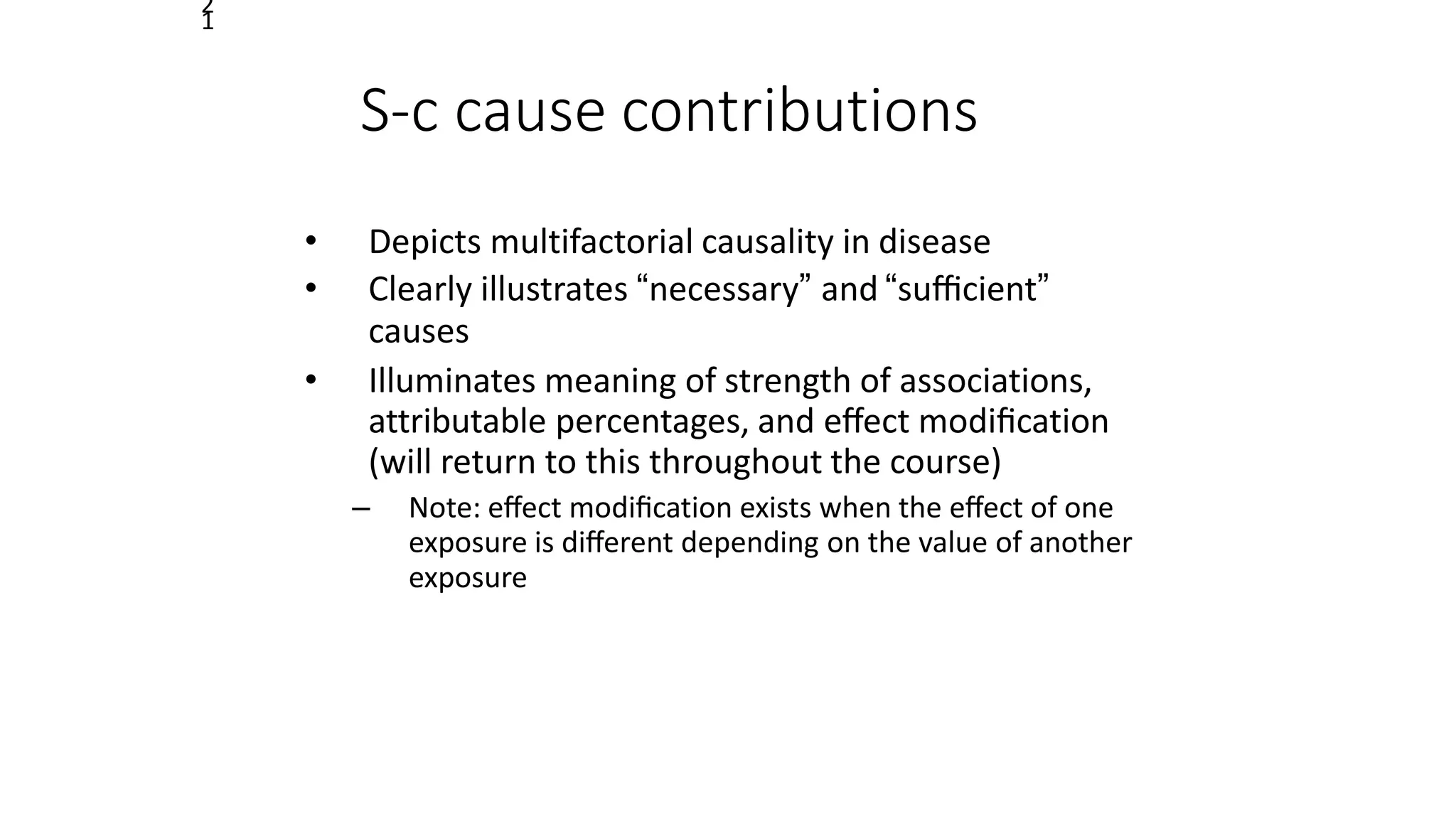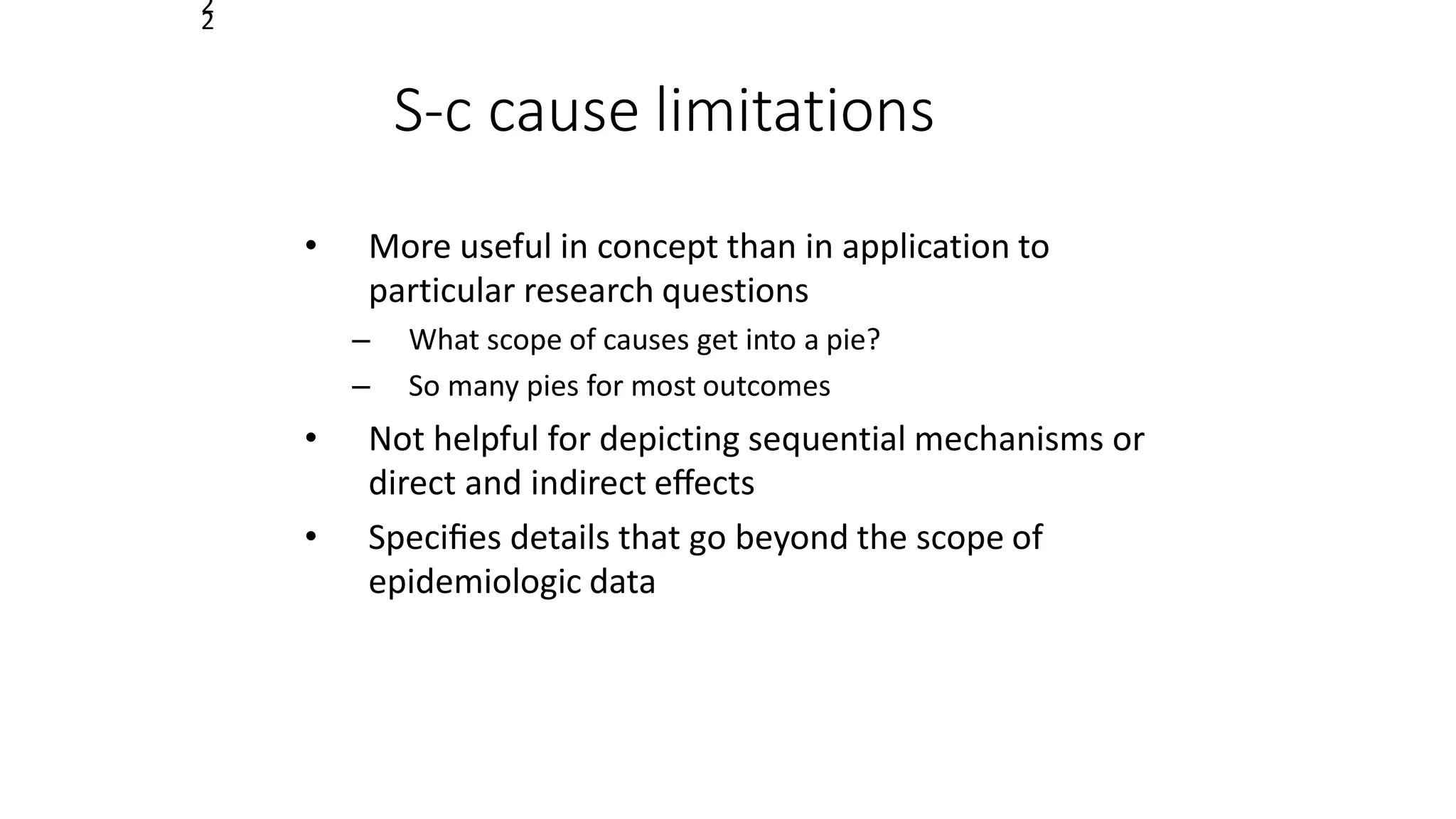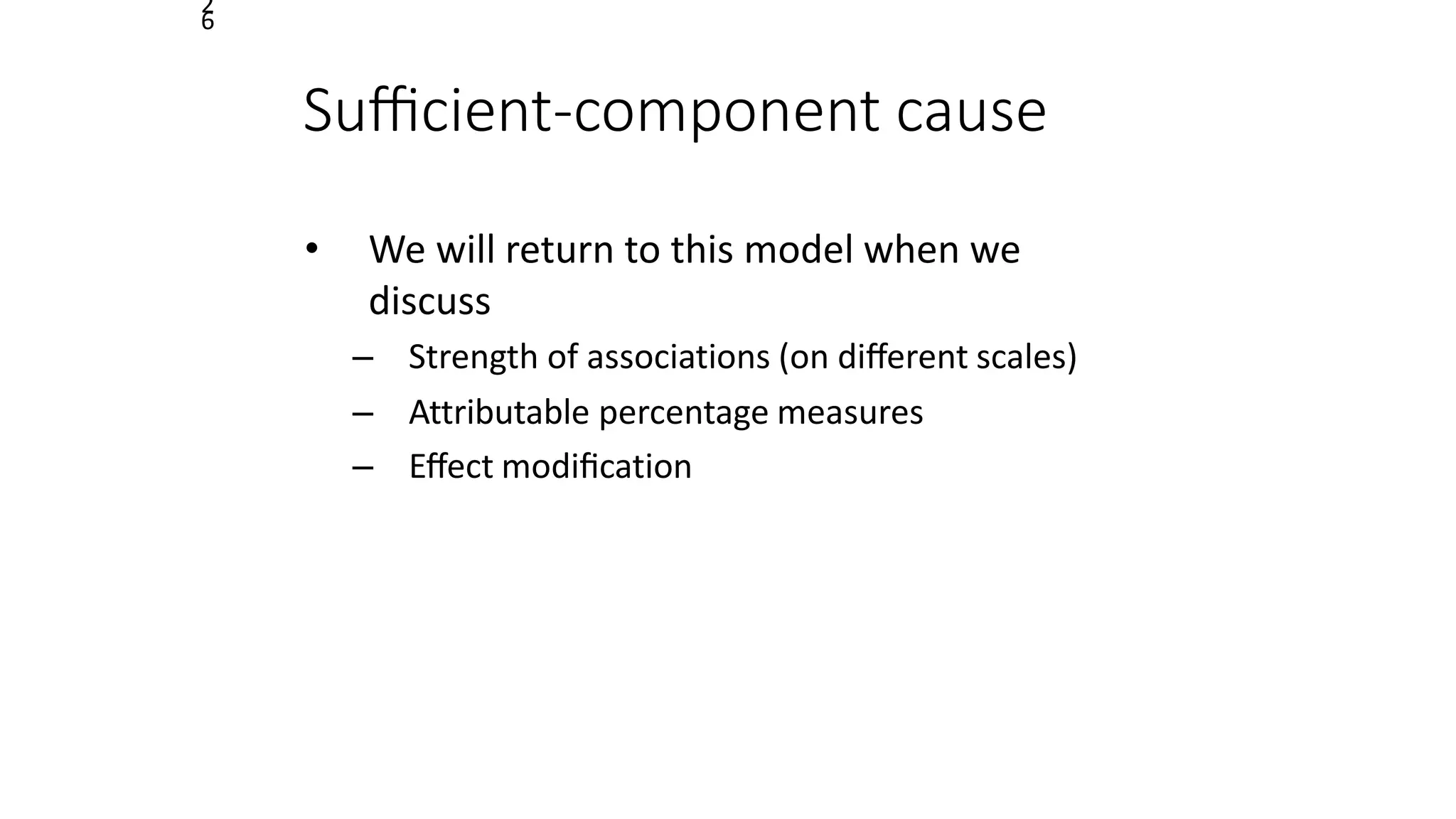This document outlines concepts related to causality in epidemiology. It discusses different models of causality including the sufficient-component cause model (Rothman's pies), counterfactual framework, Hill's criteria, and graphical models. The sufficient-component cause model depicts disease causation as occurring through combinations of component causes that are sufficient to result in the disease outcome. It illustrates concepts like necessary and component causes. The model contributes to understanding how the strength of associations can depend on the prevalence of other component causes in the population.

